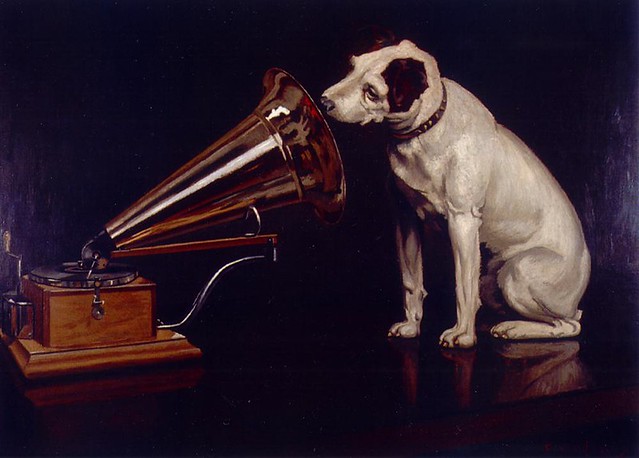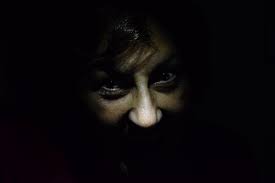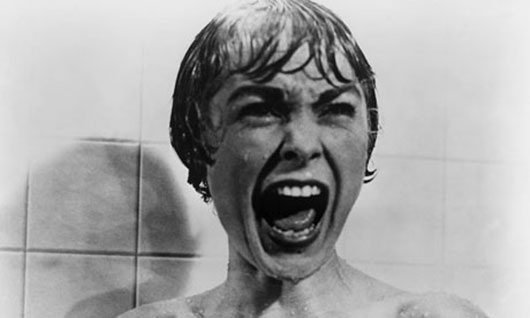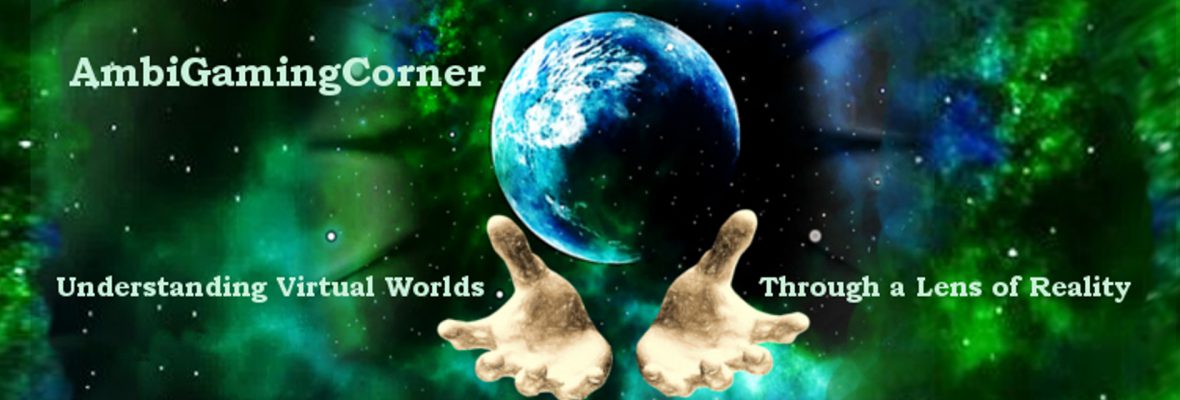Happy Almost-Halloween, everyone!
A long time ago, I wrote about the power music wields in video games, particularly as a “shorthand” for emotions, memory triggers, and establishing a setting or time period. While not required to understand the following information, I do recommend checking the post out if you want to know a little more about how music is used in games to establish and reinforce important aspects of video games.
That post prompted a lot of discussion, and The Well-Red Mage asked about associations we make with certain sounds, particularly what makes us think that creepy music is creepy. And me, knowing that October would probably come around later this year, tucked the idea away, and now here we are.

Music possesses many different qualities that create the emotional and psychological pull we experience, and has many different aspects to explore, so we’ll be talking briefly about some of the more relevant ones before delving into some brief analyses of some of the “creepiest” music in gaming.
Perception vs. Felt
There are two ways for a person to experience emotions. The first way is through the perception of them. Perceived emotions are emotions that we are able to identify through context or auditory clues. This means that we can identify music that is happy, sad, angry, scared, or even spooky, even if the music doesn’t make us actually feel happy, sad, angry, or scared (or any other emotion).
For instance, if I asked you to name an emotion that this piece is trying to convey:
…you would probably pick an emotion in the “angry” family. The emotion you pick is the emotion you perceive from the piece of music. However, if I asked you what emotion you felt listening to the music, you might say you felt excited, or bored, or anxious, or nothing at all. Similarly, if I asked you to name the emotion in this piece:
…all you would need to do is listen to the opening few notes to know that something in the “scary” realm is happening. But again, you might not experience fear.
This second type of experience is much more personal. Felt or experienced emotions are the ones you experience first-hand. You do not need to be able to label what it is (and you can experience more than one emotion at a time!), but the emotion is causing you to experience a physical and psychological response in your body.
Moving Music
We are of course able to identify/perceive emotions in music, just as we are able to perceive emotions in other melodic experiences like our prosody (“tone of voice”). But music can also be very effective for inducing emotions. That is, by listening to music, one may experience an emotion that had not been experienced immediately prior to the music listening, like my experience with listening to “Night on Bare Mountain,” which I’ll talk about in a bit.

Interestingly, this happens most readily for what I’ll call the “primary” emotion categories: happy, sad, and angry. “Frightened” tends to be a much more difficult emotion to induce, as fright tends to stem from feeling threatened in some way. Video games and other media put us into an interesting place where we are “virtually” in a dangerous situation, and because of our empathy with the main character may feel threatened, but we also know that we ourselves are not in real danger.
So while we may feel what is called “heightened arousal” (like increased heart rate), because we are sitting in a safe environment, we might not label our experience as clearly “fright.” After all, an increased heart rate and butterflies in the stomach can either be signs of excitement or signs of fright, depending on what else is going on.*

As an example: when I hear “Night on Bare Mountain,” I know for a fact that my heart rate goes up, which can be a sign of fear. And, yes, in a way this piece makes me feel uneasy because I am having a physiological reaction to it that puts me outside of my usual state of being. And yet I don’t feel particularly frightened listening to this piece, even though I know that is the primary emotion it is trying to convey to me, and so instead I’ll interpret my reaction as “excited” rather than “fearful.”
The best music by itself can hope for is to raise our physiological arousal and strengthen the negative valence of the emotion. What this means is that you might feel an intense, negative emotion, and then look for other context clues to determine what type of negative emotion it is: is it anger? Fear? Sadness?

Luckily, certain auditory features (sounds) are specific to “scary” music (versus, say, angry music) and, in the case of video games, there is an added visual and (sometimes) emotional component to ensure the proper “fear” cues are being provided. The music just needs to step in and make it worse.
This isn’t to say that the music’s job is just the icing on the cake, though. We are actually hardwired to think certain sounds are unnerving and scary, and they will creep us out when we hear them. And as it turns out, some scary sounds are universal.

Music, Culture, and Fear
Some research has suggested that certain sound, both musical and non-musical, are responsible for giving scary music its frightening twinge. From a non-music perspective, we – as mammal – are hardwired to find harsh, unpredictable, and otherwise non-linear sounds and unsettling and stressful. The reason these three particular elements (harsh, unpredictable, non-linear) are so meaningful and alarming to us is possibly because those are the types of sounds we produce when in stressful, dangerous situation. To put this another way, it reminds us of “alarm” sounds like screaming or crying, which are harsh, not rhythmically predictable, and chaotic, insofar as the sound is not controlled like during speech or singing.

Music can be manipulated to mimic these elements, but music elements themselves (e.g., tempo) can be organized in various ways to portray distinct emotions with relative accuracy. Research has shown that tempo (speed of the music), articulation (how short the notes are), frequency (how high or low the notes are), and volume are the elements most often manipulated when trying to convey (or induce) fear in a listener. In more laymen’s terms, dissonant sounds (notes that “clash” with each other) are often used to create unsettling moments, and we as a society have also been conditioned to find certain types of chords to be more “negative” in emotion than others. When all of these elements come together, we get a piece of music that, at the least, conveys fear and, at the best, begins to make us feel a little scared.
To put it another way, in order to scare us, the best music taps into something more primal in us.
Armed with this new knowledge about the sound elements necessary to produce a “scary” song, let’s take a look at some examples and see what they have to offer.
“Shadow Temple” from Ocarina of Time
This particular piece pulls out all the stops when trying to make itself sound frightening. The notes of the piece are reminiscent of human moans or wailing, often starting on a higher pitch and sliding down to something lower. The rhythm in the background also is pseudo-irregular, with the “downbeat” (the beginning of each measure or, in this case, rhythm pattern), being empty in favor of the drumbeat falling slightly off where you would usually tap your foot. It creates the illusion of being irregular, one of those things that people naturally find disturbing.
“Mother Brain Theme” from Super Metroid
Like in “Shadow Temple,” this theme in Super Metroid provides an illusion of irregular beats via its use of syncopation, with the driving rhythm in the background sometimes falling on the beat (when your foot would tap the ground) and sometimes off the beat, creating an unnatural pattern that puts us at unease and gives the piece a bit of an “unpredictable” feel, even though the song itself is fairly repetitive in nature. The notes used are also high are harsh and screeching (for a 16-bit composition), which is a fairly common staple in music meant to convey fear – think of the violins in the famous shower scene in Psycho.
“Trepidation” from 9 Hours, 9 Persons, 9 Doors
This piece plays on our music associations to convey is emotion. The opening two notes repeat their pattern, until it presents a slight variation on itself. The types of instruments used have a timbre (pronounce TAM-bor and meaning the acoustic features that identify the instrument – like how a violin doesn’t sound like a flute because they have different timbres) that we have associated with horror, mixed with an industrial crunch. The long, sustained notes lend an ethereal quality, and because of the lack of traditional “notes” used in the music, we’re left wanting to find patterns where there aren’t, making us uneasy.
And speaking of not finding patterns…
“River Twygz Beds” from Super Paper Mario
Remember when we talked about the uncanny valley? Well, just like how we are very good at knowing what people are supposed to look like, we are also very good at knowing what sounds are supposed to sound like, specifically when it comes to music in whatever our cultural tradition is. This theme in Super Paper Mario just sounds “wrong,” and part of that is because it has a very distinct “played backwards” sound to it, which means that the notes are not presented in conventional ways, sounding dissonant and therefore unsettling to our ears.
The pitches are high, and none of the notes “make sense” with each other. Additionally, the piece uses sound effects of indistinct talking – but not indistinct like off in the background. Again, there is something “not right,” and as our brains search for patterns in the familiar sounds of “oh, that’s a human voice” we are left with the beautifully awful juxtaposition of instinctively picking out the “familiar” elements of hearing a human voice and thus making ourselves aware of everything incredible wrong with it.
This piece falls into the uncanny valley of sounds.

Of course, this doesn’t even begin to talk about the use of silence to build tension, such as in a game like Grim Dawn or even Metal Gear Solid, which suddenly rip the music away from you at key points to either accentuate how alone you are, or to signal that something is not quite right about what’s going on. After all, music is comprised of not only notes, but of silences, and when used effectively, silence can be powerful.
Conclusion
Of course, like with any art medium, each person’s reaction to the pieces here will be different. For some, these pieces might induce an uneasiness that we interpret as fear, or at the very least unease (since we’re probably not in a virtual or physical situation that is dangerous). For others, they might not, and yet you are clearly able to identify the emotion these pieces are trying to convey. In either case, it’s the way the music elements interact with each other, and the primal responses they invoke, that make both of these reactions possible.
There are of course other wonderful songs out there in games that try to capture fear, like “Light and Darkness” from Twilight Princess, the Giygas theme from Earthbound/Mother 2, and “Graveyard Moon” from Shadow Hearts, and many others. I’ll challenge you to determine what it is that might make these pieces frightening.
Is it the speed? An irregular beat? The use of sounds reminiscent of wails, screams, or other primally “warning” or “frightened” sounds? Or something else?
What do you think? What is the scariest piece of music you’ve come across in a game? Did it make you feel scared, or were you simply aware that the music was “supposed to be scary now”? Do you think it’s possible to detach from actually experiencing these types of emotions during a game? Let me know in the comments!
Thanks for stopping by, and I’ll see you soon!
~ Athena
**Extra content available on this topic on Patreon!**
What’s next? You can like, subscribe, and support if you like what you’ve seen!
– Support us on Patreon, become a revered Aegis of AmbiGaming, and access extra content!
– Say hello on Facebook, Twitter, and even Google+!
– Check out our Let’s Plays if you’re really adventurous!
References:
Blumstein, D.T., Bryant, G.A., & Kaye, P. (2012). The sound of arousal in music is context-dependent. Biology Letters, doi: 10.1098/rsbl.2012.0374
Coutinho, E., & Dibbon, N. (2013). Psychoacoustic cues to emotion in speech prosody and music. Cognition and Emotion, 27(4), 658-684.
Fritz, T., Jentschke, S., Gosselin, N., Sammler, D., Peretz, I., Turner, R., Friederici, A.D., & Koelsch, S. (2009). Universal recognition of three basic emotions. Curent Biology, 19(7), 573-576.
Juslin, P.N. (2000). Cue utilization in communication of emotion in music performance: Relating performance to perception. Journal of Experimental Psychology, 26(6), 1797-1813.
Lundqcist, L.O., Carlsson, F., Hilmersson, P., & Juslin, P.N. (2009). Emotional responses to music: Experience, expression, and physiology. Psychology of Music, 37(1), 61-90.


Having performed both Pictures at an Exhibition and Night on Bald Mountain, I definitely feel PTSD-esque flashes in response to hearing them casually played, haha (jk, but really). Mussorgsky’s an emotional guy, and I agree with you in that he’s able to reciprocate the music’s emotions onto our emotional rhythm to an extent. Some people, like you mentioned, don’t get this vibe, however, and you’re right—we all register the actual music differently; regardless of what we classify it as, we may not honestly experience those emotions (hearing an angry piece vs. being angry as a result). That’s why I love movies and games, where the music is interwoven with the action on screen to produce something quite possibly frightening or joyous.
I just finished exploring the Danganronpa franchise, and the anime adaptation for Danganronpa 3 includes a particularly edgy track that always makes me uneasy. Without context it might just be noise to you, but I’ll leave it here anyway, along with the recommendation to check out the Danganronpa franchise (starts on PS Vita I think, might be on steam…) if you haven’t yet. Wild stuff, incredibly unpredictable and, at its height, truly terrifying stuff.
Excellent post! Love the psychological study you’ve put together here—I can definitely see all of the research done!
LikeLiked by 1 person
I loved playing Pictures at an Exhibition and Night on Bald Mountain! They were so much fun! I’m not sure what part you played, but the violin parts are pretty epic haha That’s probably why I enjoy them, even as you have some pseudo-negative flashback responses (haha). I think, like movies, these pieces were meant to be heart with a certain image or story in mind which, like watching a movie or playing a game, would certainly add to their emotional potential!
I actually am not that familiar with Danganropa, but it sounds like something I’ll have to check out!
Thank you! My master’s thesis was on emotions in music and prosody/emotion development, so this is always a bit of a pet topic when it comes up! haha
LikeLiked by 1 person
excellent post and many great examples of the scary music out there. I’m not familiar with all of Mussorgsky’s work, but those 2 tracks, especially Night On Bald mountain I absolutely love. Night On Bald Mountain takes me back to my child hood and watching it from Fantasia over and over again. Such a good piece and creepy as hell! Perfect halloween song for me 🙂
As I was reading your breakdown on Night On Bald Mountain, I was thinking what you said about right before I read it. I was thinking, it is definitely a scary piece of music, and I acknlowledge it’s scary, but i don’t feel scared, or don’t feel fear, rather, I thought I felt excited, which is right what you said after. And i think that’s true for all scary types of music like it, especially all the heavy metal i listen to that just tends to be the same way, it may have creepy and scary themes to them, but i always get excited.
LikeLiked by 1 person
They’re great pieces! I remember watching Fantasia when I was little too, and being absolutely mesmerized! That’s definite a sticking point for scary music, though, isn’t it? It doesn’t always evoke *fear* even if one can identify that it’s *meant* to evoke fear. It’s so interesting how that line is drawn for different people, isn’t it?
LikeLiked by 1 person
Yea it is. Makes me want to go watch that scene from Fantasia now
LikeLiked by 1 person
Great post! I think the scariest piece of game music I know of is this one:
Most of the game has no music, except for these safe rooms where you can save and restock supplies free from enemies. Hearing such calming music is a smart way of putting that idea across – at the same time it’s a powerful reminder of how limited your safety really is, being confined to maybe only five or so rooms in the entire game. It works too because the lack of music in the rest of the game feels so oppressive.
LikeLiked by 1 person
Thanks!
That’s a great example! While it’s peaceful, it still does have a fairly lonely feeling to it, doesn’t it? You’re right that it drives home the point of feeling by yourself. You also make a great point about using a *lack* of music effectively. No music means no safety, and accentuates the loneliness at the same time. Thanks for sharing your thoughts, as always!
LikeLiked by 1 person
Excellently written as always! I think the best creepy songs are the ambient ones that are almost unnoticeable. But clearly, I notice them in the back of my mind, and it becomes most apparent when I get scared in the game. So glad you included Trepidation from the Zero Escape series. That is seriously the epitome of scary music. It would be scary no matter the context. It’s blood-curdling…
LikeLiked by 1 person
Thank you! I agree that the most chilling music is the kind that you don’t even notice is affecting you, because then you don’t think to consciously counteract it, so to speak.
I’m glad you liked the example! Ian from Adventure Rules suggested it, and I’m so glad he did! It’s a great example; I’ve never played that game, but… wow even without it, that music is creepy….
LikeLiked by 1 person
Awesome! The song is so super creepy, and it just has to be referenced anytime anyone is talking about scary video game music. I remember recommending it as one of the scariest pieces ever too, though I don’t recall exactly where.
LikeLiked by 1 person
I think this was one of my “spooky” FF Friday questions or in the same vein! Dissonance is a huge factor in fright, because it sounds disjointed and definitely aligns with the visual uncanny valley. Nobuo Uematsu utilized this a lot I’m FFVII to create one of the eerier soundtracks.
Ack! I’m so glad I saw “Mother Brain” before I scrolled I completely saw the picture (or before it fully registered in my own brain). Stuff of nightmares right there 😳😳😳
LikeLiked by 1 person
Really? How did I miss that?? I’ll have to go find your article. But you’re on point with dissonance!
Oops, sorry! I guess I should have posted a warning about creepy imagery!
LikeLiked by 1 person
It was the week before! I’d actually love your musical opinion on my picks. I’m not as brushed up on the terminology as I’d like to be.
https://theshamefulnarcissistspeaks.com/2017/10/20/final-fantasy-friday-the-key-of-creep/
Oh, speaking of such, have you told you about the YouTuber who does thorough examinations of game music? Like he literally transcribes and examines why certain elements work in songs. I think his channel is called 8-bit Music or something like that. He’s clearly a music geek, and he’s kind enough to share his knowledge with the world.
Ah no worries, it was a horror post! And I’m just particularly sensitive to the horror that is Mother Brain o.O
LikeLiked by 1 person
Thanks for the link! I’ll check it out this evening 🙂
You have! I actually follow him on YouTube, and really enjoy his posts!! I’m glad you like how he breaks down the music 🙂
Eep, well, fair warning about a post coming up tomorrow, then…
LikeLiked by 1 person
I shall scroll precariously then lol.
Me, too. I love his breakdowns. You can tell he’s an expert on this, but he’s not condescending about it. He just wants to share his studies with the world, and I couldn’t be happier.
LikeLiked by 1 person
Whoa! Including the superb Patreon notes, I learned a lot here! Fantastic article 😀 I have a new appreciation for the audio in Hellblade now too. I have nothing intelligent to add but…
Challenge accepted (and likely failed, haha)! Light and Darkness – That high pitched note thing in the background sounds off. Giygas theme – Monster-like noises and it sounds like it goes out of tune. Graveyard moon – ominous choir parts, and random sounds that just don’t “fit”. There, I tried at least 🙂
LikeLiked by 1 person
Sounds fantastic! haha I’d say you passed with flying colors. There are so many ways a piece can sound creepy. I love it haha
Glad you liked the article, and the extra notes at Patreon. Emotions and music is sort of a pet interest of mine! haha
LikeLiked by 1 person
I’ve wondered why dissonance seems to provoke such a visceral reaction. It gets that instinctual fingernails on chalkboard feel.
A lot of horror music is of the type that really fades into the background. More atmospheric than anything else. It’s kind of interesting, thinking about the composition of it. Something that’s designed so you don’t pay too much attention to it, but present enough that it gets into your brain anyways. Even a series like Silent Hill, which does put a lot of stock into its audio composition, just sticks to relatively simple songs for 90% of its playtime.
This isn’t a genre that really benefits from the hard-driving mood music or the bombastic showpiece tunes like a lot of others. They’re a lot more subtle. Something that works on more of a subconscious level.
LikeLiked by 1 person
I’d definitely agree that good horror music, like good horror, quietly sneaks its way into your brain and messes with your head without you consciously realizing it.
Well… since you asked… In music, there are things called “overtones”: basically this means that each note has more than one frequency going on at one time. All of these frequencies fit together nicely, like nice, even fractions (1, 1/2. 1/4, 1/8, etc.). When multiple notes are played together (like in any music that has harmony), frequencies still often “fit” together well, and the music is perceived as not being tense.
But, when it comes to dissonance, two (or more) notes are played together, and yet their frequencies don’t fit together well. Think of it like having multiple prints of a picture superimposed on each other, except one or two are *just* off. In music, this is when we hear dissonance – some of the frequencies sort of “hit” into each other and don’t line up right. Another way of thinking of it is that the music’s sine waves are literally hitting into each other instead of lining up.
The reason this creates tension (for most people) is (according to most recent research) because this clashing of sine waves is reminiscent of other non-music sounds, like bangs or crashes or screams or other noises that signified danger.
To be fair, dissonance isn’t always associated with “bad.” It can also simply add tension. Music will often add dissonance not to create fear, but to increase tension within a piece of music that will then be resolved later (or not).
Hope that’s helpful!
LikeLike